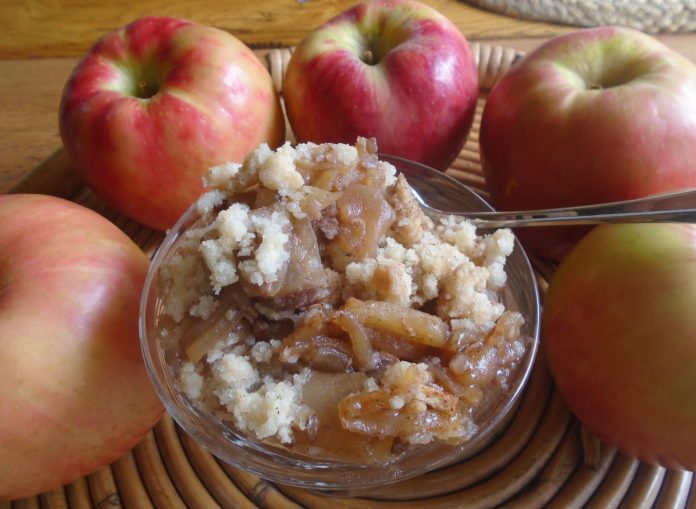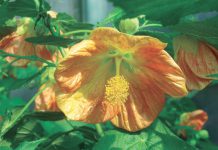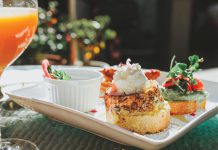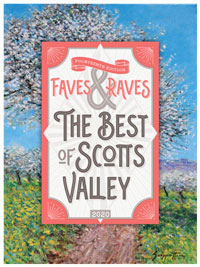“Adam did not want the apple for the apple’s sake; he wanted it because it was forbidden.” —Mark Twain
My hometown, Aberdeen, Wash., in the wintertime was wet; wet, windy and oh so cold. I remember as a 6-year-old dressed in a yellow rain slicker, my feet in galoshes and carrying a lunch pail all the while trying to manage an umbrella, while trudging along our gravel road to Stevens school; how cold and miserable I felt. Even the cloakroom next to our classroom was wet from rain-drenched clothing and smelled of wet wool, bananas and tuna fish or peanut butter sandwiches, a staple lunch during the war years.
My school was populated by children of immigrants from all over the world, Croatians, Italians, Chinese, Norwegians and Swedish, and some Irish. Many of the families had originated from the Appalachian Mountains who had traveled across country by train, as did my family, to work in the lumber industry. Remember, history has taught us the lure of the “gold country” that began in the 1840s in the West, then in Alaska in the 1890s and soon dried up by the end of that decade. Then the Depression in the late 1920s left so many struggling to find work.
My schoolmates had unusual first names, which drove the teachers a tad crazy—Ebba, Frija, Vasilya, Albin, Massimo, Wang and Li. When uncle and aunt had to address the parents of these children, uncle would refer to “that couple” that lived on (street name).
Many of my schoolmates brought unusual lunches, which their moms had packed in small “Ball” canning jars. Remember bread for sandwiches and fillings had to be bought. Leftovers from dinner were packed into those lunch boxes (or paper sacks). Pastas from the Italian mom, noodles from the Chinese mom and fish of all kinds from the Scandinavian moms. I think of the fried chicken I traded for the simple noodles with tomato sauce as we kids had soon devised a plan of trading lunches; after all, isn’t the “grass always greener on the other side?”
I loved the Croatian lunches the best. It was only years later that I discovered the Croatian lunches were always packed with dumplings filled with “rabbit” meat. Today, I cannot touch rabbit meat as I see those soft eyes looking at me.
Our boarding house had a huge black wood stove that always had a fire burning inside and our family room had a wood heater as well. But the other rooms had no heat, and doors were always closed between the two, leaving our beds so cold during those winter nights. I would place my pillow on the side of the heater until it was hot, fold it and run to bed, my version of an electric blanket.
Those winter days brought not only rain, but it also carried along with it the fresh and sweet smell of apples that aunt was peeling in our kitchen for apple dumplings, pies, cobblers and applesauce that was simmering on that wood-burning stovetop. For me, aunt’s apple cobblers were the best.
As a kid, I only remember two varieties—the Gravenstein and the deep red Delicious. The Gravenstein was first brought to the U.S. by the Danish, and the Delicious was first recognized in 1872 in Iowa as a “chance” seedling. Unlike the Gravenstein, which is a great cooking apple, the red Delicious is best as an “eating” apple and great in salads, such as the Waldorf, a blend of apple and walnuts with a whipped cream/mayonnaise dressing. A touch of bourbon splashed over the apples prior to the addition of the dressing takes the salad to a new level.
Uncle kept wooden boxes filled with apples in our pantry outside of our kitchen all during apple season. One step into that pantry and you were filled with their smells, and after school, I was always allowed one apple a day from either of those boxes. I always chose Gravenstein.
Here in California, Gravensteins are grown in Sonoma County, whose cold crisp days and nights are what this apple needs. Harvest time is in August.
While at the market, choosing a dozen Honeycrisps, which I find a reasonable substitute for the Gravenstein for my apple strudels I would bake this week, I smiled, remembering those boxes of apples uncle always kept in our pantry.
Oh, how I loved my uncle and aunt who kept me warm, my belly filled with simple but delicious home-cooked food and nighttime kisses. My only regret is not telling them how much they meant to me as I was young when I left their home for another with the nuns to finish my schooling. Aunt was ill, life had taken its toll and uncle soon after. Perhaps through my writings I am honoring them. Perhaps they know. Perhaps!
Aunt’s Apple Cobbler
Aunt made this with her dry pound cake mix. It’s from an old World War II cookbook. I do not have her pound cake recipe.
I use boxed pound cake. DO NOT use any other cake mix other than the “pound” cake. They do not work!
In a bowl mix together:
8 thinly sliced apples, Honeycrisp or Gravenstein when available.
1 tsp. cinnamon
1/2 tsp ground cloves
1/2 tsp. salt
2 Tbsp. cornstarch
1/2 cup of sugar
Mix well and let stand for 10 minutes.
Spread evenly in a 9”x13” baking pan.
In a separate bowl add:
1 box of Pound Cake mix
4 Tbsp. room temp. butter
1 cup chopped pecans
Mix together—it will be lumpy.
In the baking pan with apples:
Spread apple mixture evenly over bottom.
Sprinkle Cake mixture over top.
This will be lumpy.
Bake 45 min. at 350deg.
Colly Gruczelak, a Ben Lomond resident, loves people and loves to cook. Contact her at cz****@*****st.net.













